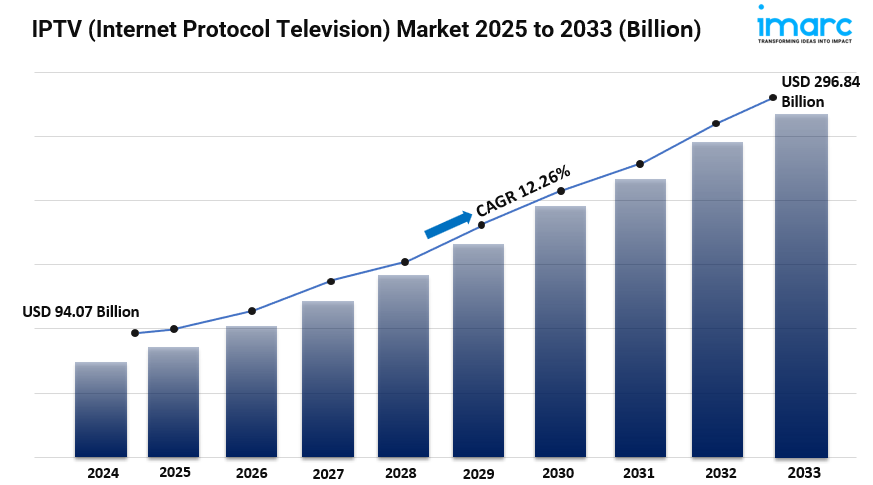
IMARC Group, a leading market research company, has recently releases report titled “In Vitro Diagnostics Market: Global Industry Trends, Share, Size, Growth, Opportunity and Forecast 2025-2033,” The study provides a detailed analysis of the industry, including the global in vitro diagnostics market size, share, growth, trends and forecast. The report also includes competitor and regional analysis and highlights the latest advancements in the market.
Report Highlights:
How big is the in vitro diagnostics market?
The global in vitro diagnostics market size was valued at USD 116.7 Billion in 2024. Looking forward, IMARC Group estimates the market to reach USD 181.5 Billion by 2033, exhibiting a CAGR of 5.0% from 2025-2033.
Factors Affecting the Growth of the In Vitro Diagnostics Industry:
Technological Advancements and Shift Toward Decentralized Testing:
One key factor driving growth in the IVD market is the rapid progress in diagnostic technologies. There is a shift from centralized lab testing to decentralized and point-of-care (POC) diagnostics. Compact, user-friendly, and sensitive diagnostic devices let healthcare providers deliver faster and more accurate results right at the point of care. Innovations like lab-on-a-chip, biosensors, and microfluidics cut turnaround times and boost accessibility, especially in remote areas. Also, digital integration of diagnostic devices with data systems and electronic health records allows real-time data sharing. This leads to better decision-making. These advancements are crucial for managing infectious diseases, monitoring chronic conditions, and handling emergencies. Rapid diagnostics can greatly improve patient outcomes. As consumers and healthcare providers prioritize convenience, speed, and accessibility, demand is increasingly shifting toward decentralized testing solutions. This change influences product development and investment across the IVD landscape.
Rising Prevalence of Chronic and Infectious Diseases Globally:
The growing global burden of chronic diseases like diabetes, heart issues, and cancer is increasing the need for in vitro diagnostic solutions. Infectious diseases such as influenza, HIV, tuberculosis, and new threats like COVID-19 also add to this demand. An aging population and lifestyle changes are leading to more non-communicable diseases. This makes routine monitoring and early detection more important. In oncology, molecular and companion diagnostics help identify biomarkers and guide targeted therapies. This has caused a surge in demand for specialized IVD tests. The COVID-19 pandemic showed how crucial rapid and accurate diagnostic tools are for managing outbreaks and public health.
Growing Integration of Artificial Intelligence and Data Analytics in IVD:
AI, machine learning (ML), and advanced data analytics are changing the IVD sector. They improve diagnostic accuracy, workflow efficiency, and personalized healthcare. AI platforms now interpret complex diagnostic data. They identify patterns and support clinicians faster and more reliably than before. In pathology, genomics, and radiology, AI automates image and signal analysis. This reduces human error and speeds up diagnosis. Predictive analytics tools forecast disease risk and progression using patient data. This is especially useful for managing chronic diseases and preventive medicine. As regulations adapt to support AI devices, and healthcare providers grow familiar with digital tools, adoption will likely speed up. This tech convergence boosts diagnostic capabilities and opens new business models. These include precision medicine, remote diagnostics, and integrated digital platforms, reshaping the IVD industry’s competitive landscape.
Request for a sample copy of this report: https://www.imarcgroup.com/in-vitro-diagnostics-market/requestsample
In Vitro Diagnostics Market Report Segmentation:
Breakup by Type:
Clinical Chemistry
Molecular Diagnostics
Immunodiagnostics
Hematology
Others
Breakup by Product:
Reagents and Kits
Instruments
Breakup by Usability:
Disposable IVD Devices
Reusable IVD Devices
Breakup by Application:
Infectious Disease
Diabetes
Cancer/Oncology
Cardiology
Autoimmune Disease
Nephrology
Others
Breakup by End User:
Hospitals Laboratories
Clinical Laboratories
Point-of-care Testing Centers
Academic Institutes
Patients
Others
Breakup By Region:
North America (United States, Canada)
Asia Pacific (China, Japan, India, South Korea, Australia, Indonesia, Others)
Europe (Germany, France, United Kingdom, Italy, Spain, Russia, Others)
Latin America (Brazil, Mexico, Others)
Middle East and Africa
Global In Vitro Diagnostics Market Trends:
The In Vitro Diagnostics (IVD) market is changing fast. This shift is due to new technology, evolving healthcare needs, and changing consumer expectations. A major trend is the rise of point-of-care (POC) testing. These easy-to-use tools provide quick results outside traditional labs, such as in clinics, pharmacies, and homes. The COVID-19 pandemic helped many healthcare providers and consumers see the value of self-testing and rapid diagnostics. This trend continues to affect the market today. There is now a higher demand for portable, user-friendly devices that deliver accurate tests with little training. Another important driver of change is personalized medicine. Advances in molecular diagnostics, genomics, and companion diagnostics allow for more tailored treatment decisions based on individual genetic profiles. This is especially vital in oncology. IVD tests can identify specific biomarkers and guide targeted therapies. This improves patient outcomes and reduces unnecessary treatments.
Who are the key players operating in the industry?
The report covers the major market players including:
Abbott Laboratories
Agilent Technologies Inc.
Biomerieux SA
Bio-Rad Laboratories Inc.
F. Hoffmann-La Roche Ltd
Fujifilm Holdings Corporation
Illumina Inc.
Qiagen N.V
Quest Diagnostics
Shimadzu Corporation
Siemens Healthcare GmbH
Sysmex Corporation
Ask Analyst & Browse full report with TOC List of Figures: https://www.imarcgroup.com/request?type=report&id=6467&flag=C
If you require any specific information that is not covered currently within the scope of the report, we will provide the same as a part of the customization.
About Us:
IMARC Group is a global management consulting firm that helps the world’s most ambitious changemakers to create a lasting impact. The company provides a comprehensive suite of market entry and expansion services.
IMARC offerings include thorough market assessment, feasibility studies, company incorporation assistance, factory setup support, regulatory approvals and licensing navigation, branding, marketing and sales strategies, competitive landscape and benchmarking analyses, pricing and cost research, and procurement research.
Contact US:
IMARC Group
134 N 4th St. Brooklyn, NY 11249, USA
Email: sales@imarcgroup.com
Tel No:(D) +91 120 433 0800
United States: +1-631-791-1145




















Write a comment ...